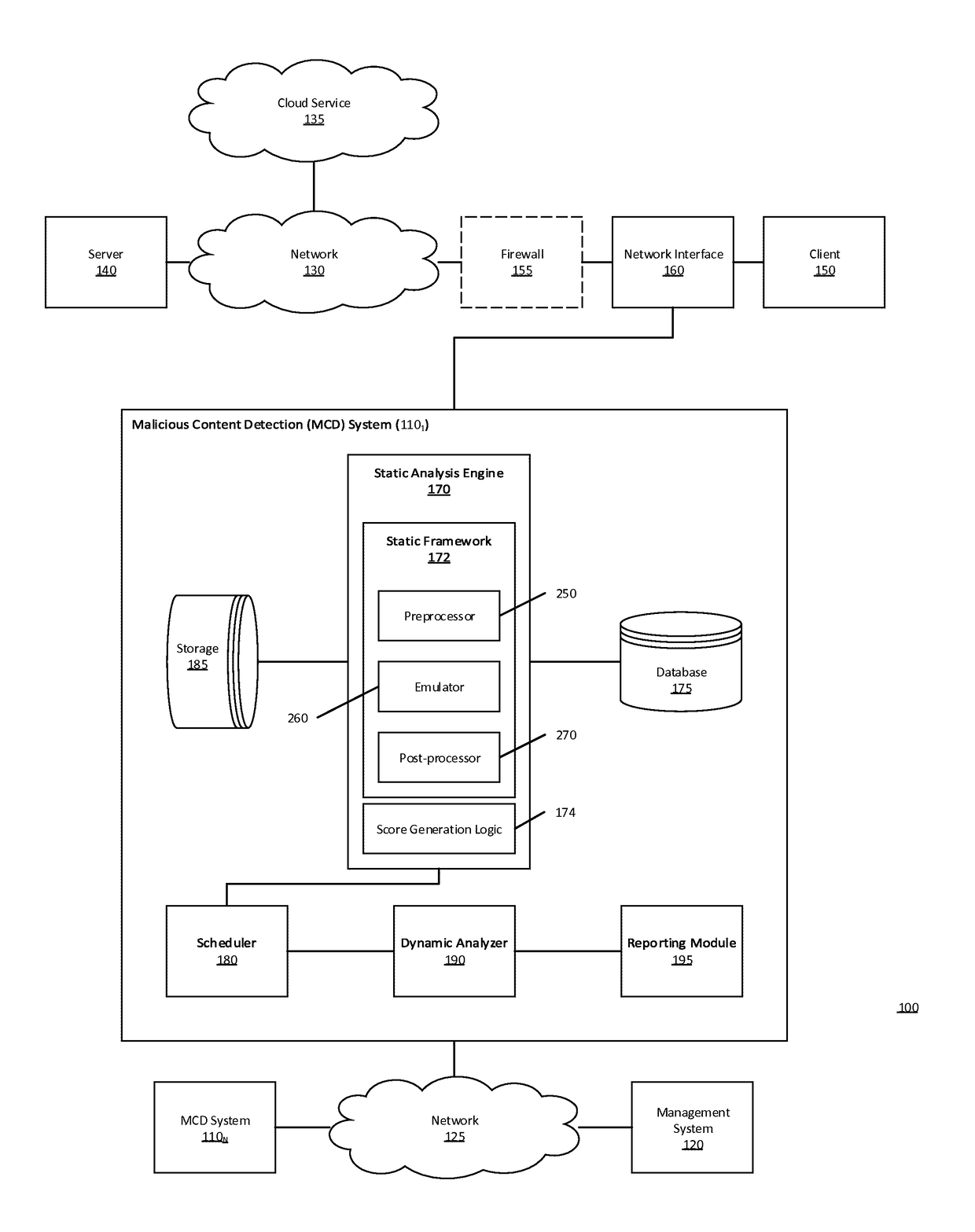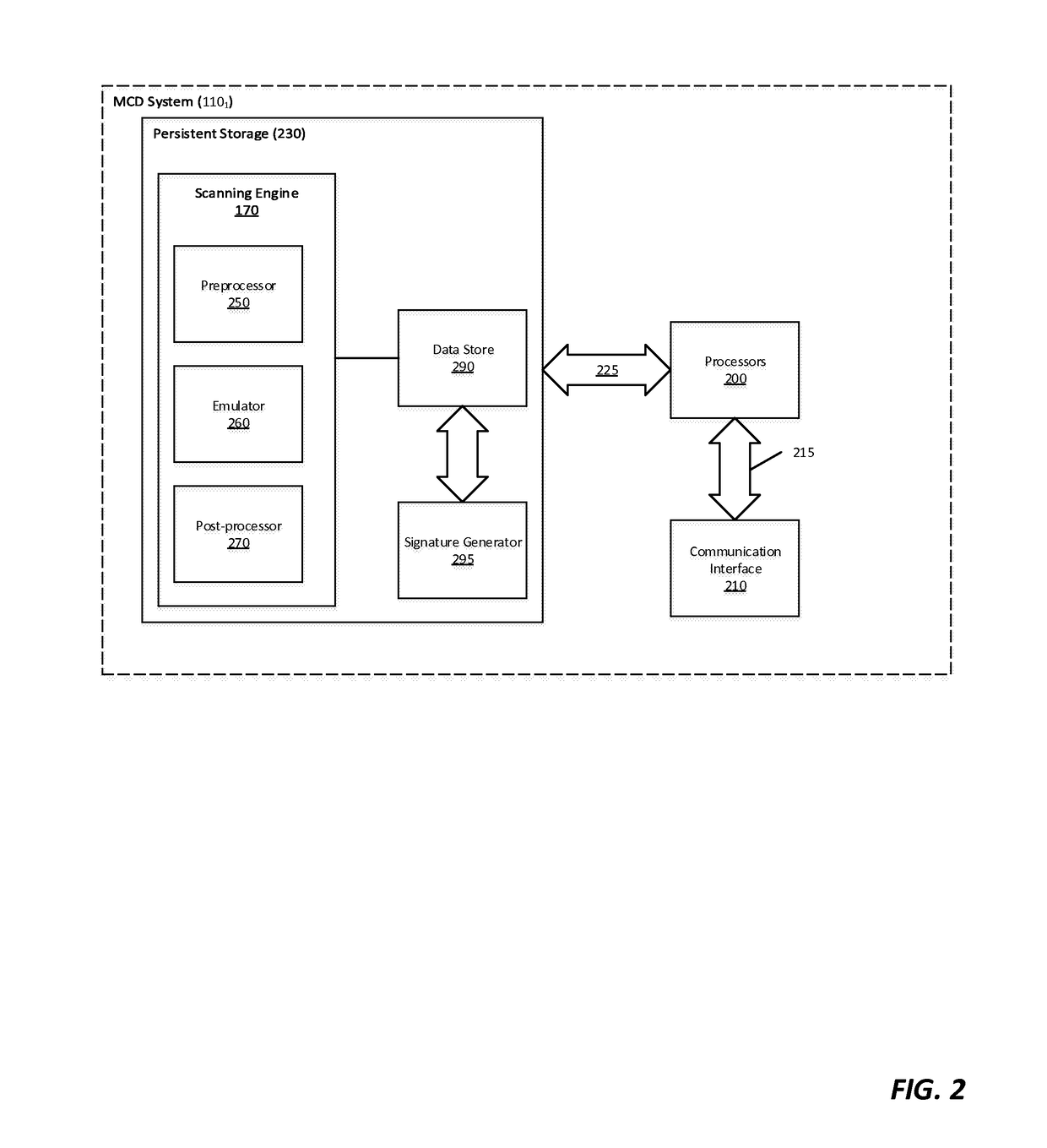Multistage system and method for analyzing obfuscated content for malware
a malware and content analysis technology, applied in computing, instruments, electric digital data processing, etc., can solve the problems of increasing false negatives, failing to detect malware in obfuscated content, and increasing false negatives
- Summary
- Abstract
- Description
- Claims
- Application Information
AI Technical Summary
Benefits of technology
Problems solved by technology
Method used
Image
Examples
Embodiment Construction
[0012]Various embodiments of the disclosure provide a multistage malware analysis scheme that takes into account whether content is obfuscated in automatically analyzing that content for malware. Embodiments of the analysis scheme attempt to de-obfuscate such content using an emulator, and then statically analyze the de-obfuscated content for suspiciousness prior to processing only that content found to be suspicious in a dynamic analyzer. The dynamic analyzer processes the suspicious content in a virtual runtime environment (e.g., using one or more virtual machines configured with a software profile suitable for the type of content). In this way, embodiments of the invention provide efficient detection of malware embedded in obfuscated content, while avoiding high levels of false positives and high computing resource demands (e.g. CPU processing time, temporary memory space, network bandwidth, etc.).
[0013]In one embodiment, the multistage malware analysis scheme initially determine...
PUM
 Login to View More
Login to View More Abstract
Description
Claims
Application Information
 Login to View More
Login to View More - R&D
- Intellectual Property
- Life Sciences
- Materials
- Tech Scout
- Unparalleled Data Quality
- Higher Quality Content
- 60% Fewer Hallucinations
Browse by: Latest US Patents, China's latest patents, Technical Efficacy Thesaurus, Application Domain, Technology Topic, Popular Technical Reports.
© 2025 PatSnap. All rights reserved.Legal|Privacy policy|Modern Slavery Act Transparency Statement|Sitemap|About US| Contact US: help@patsnap.com



